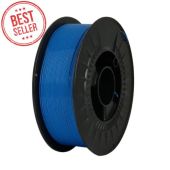PETG Retraction Settings
Understanding PETG and Why Retraction Matters
PETG, or Polyethylene Terephthalate Glycol, is one of the most widely used materials in desktop 3D printing. It offers a strong balance of toughness and printability, combining the durability of ABS with the ease of PLA. That makes it popular for everything from functional prototypes to finished parts.
A common issue with PETG is stringing, those thin, unwanted plastic threads that stretch between travel moves. The main factor behind this problem is retraction. Retraction occurs when the extruder pulls filament back during travel moves, releasing pressure in the nozzle and reducing the chance of excess material leaking out.
Getting retraction right is crucial. If settings are too



Please complete your information below to login.
Bejelentkezés
Új fiók létrehozása